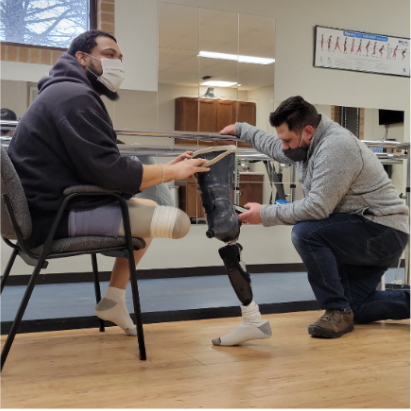PREVENTING MUSCLE CONTRACTURES AFTER AMPUTATION
- bionicpo

- Sep 10
- 2 min read
Living with a limb difference or recovering from an amputation comes with its unique challenges. One of the significant concerns during the healing process is the risk of developing muscle contractures, a condition where muscles, tendons, or joints become stiff and lose flexibility. But don't worry! By following the right recovery practices, you can significantly reduce the risk of developing contractures and improve mobility in the long term.
What are Contractures, and Why Do They Matter? Contractures occur when muscles and tissues around the amputation site tighten, limiting the movement of the remaining limb. This can be both painful and impact your ability to use a lower limb prosthesis effectively. Maintaining the range of motion in your residual limb and remaining joints is crucial for a more natural gait and reducing energy expenditure when performing basic tasks.

Positioning: The Right Posture Can Make a Difference
While it is common and expected for a new amputee to be bound by a wheelchair following an amputation, it is important to be able to stretch the limb whenever possible. This is key in preventing contractures. While resting, it is essential to avoid positions that may cause muscles to tighten. Consider using pillows to elevate and support your limb, ensuring it stays as straight as possible during rest.
Listen to Your Body: Rest When Needed
Pain is your body's way of signalling that something isn’t right. If you feel discomfort during any stretching routine, stop immediately. Overstretching can lead to injury, which might prolong the healing process or cause additional complications. Always consult with your healthcare provider or physical therapist before beginning any new exercises.

Working with Your Healthcare Team
Collaboration with your doctor, prosthetist, and physical therapist is essential. These professionals will help create a personalized plan tailored to your unique needs. They can guide you on which exercises are best suited for your current condition and how to modify them as you progress.
Take Action Now
The sooner you start your exercises and stretching routine, the better. Not only will it help you to prevent contractures, but it will also lead to a smoother transition as you adjust to your prosthetic limb.
Start small and stay consistent; your body will thank you in the long run.

_edited_edited_e.png)



Comments